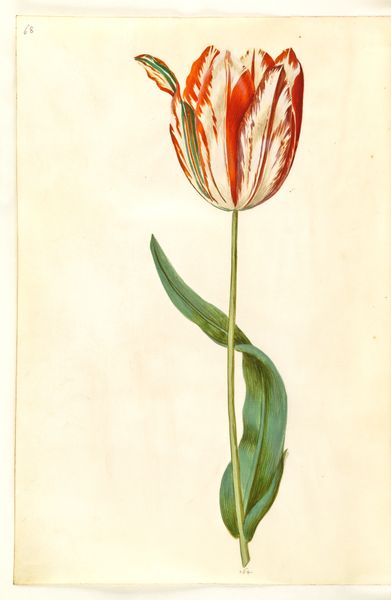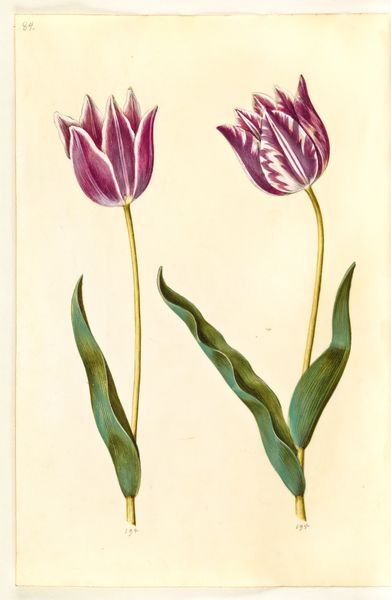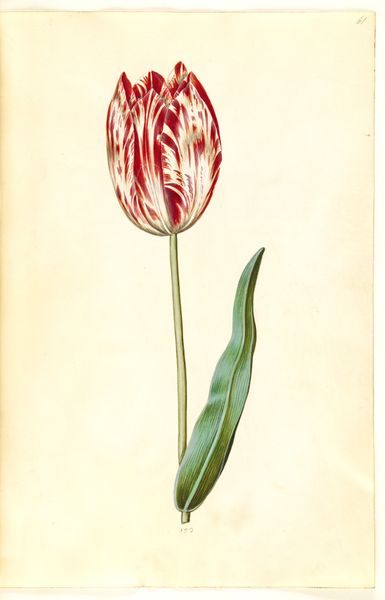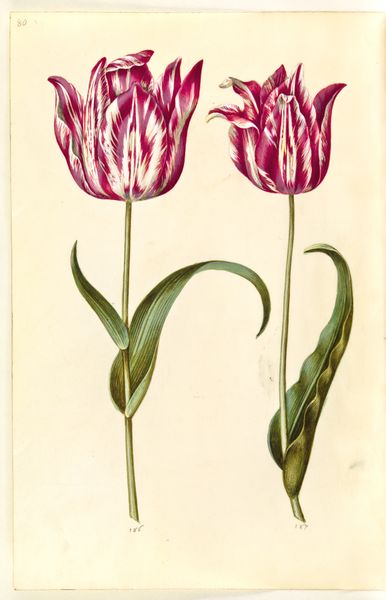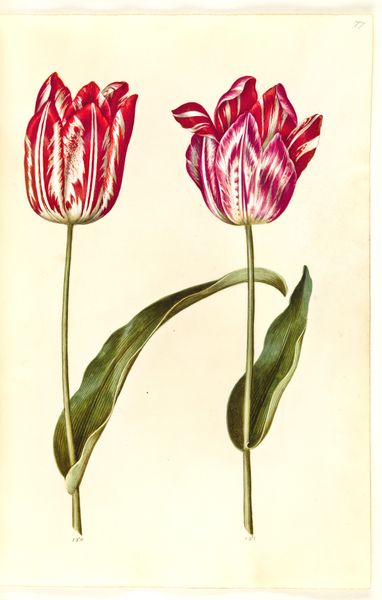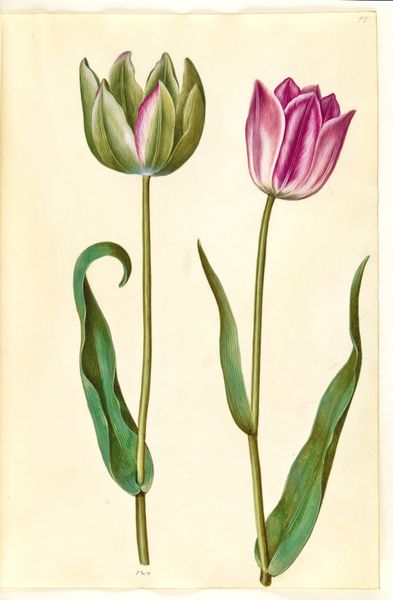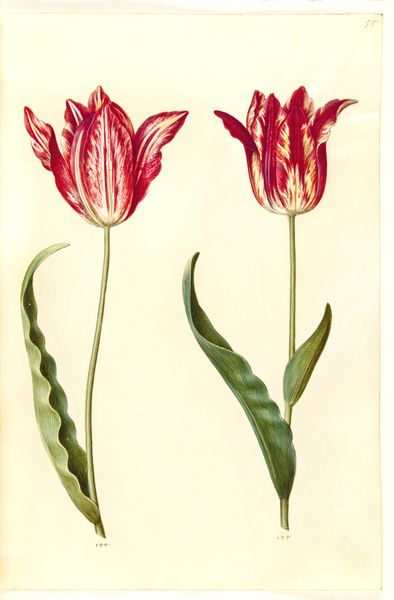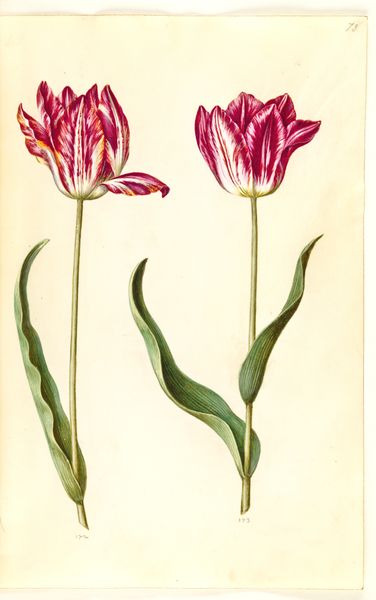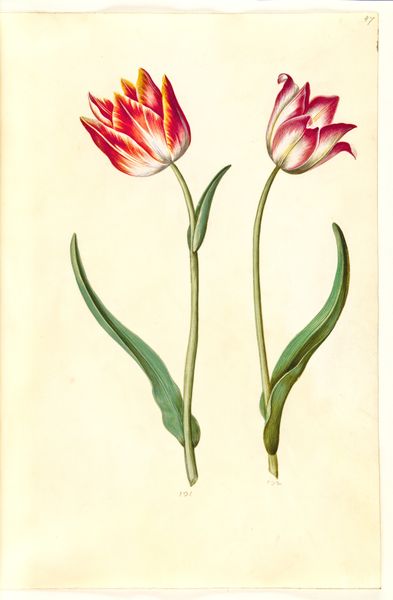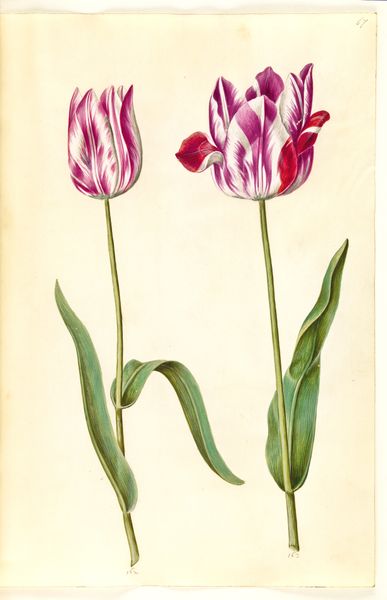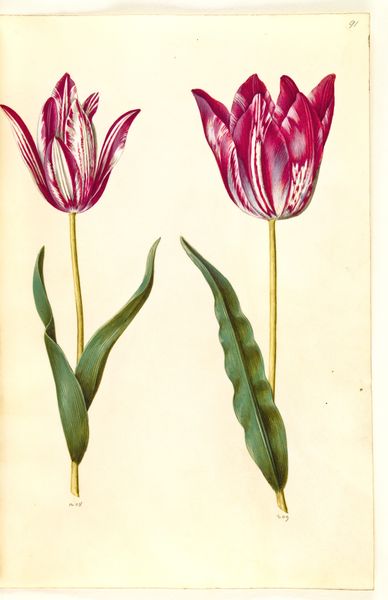
drawing, gouache
#
drawing
#
dutch-golden-age
#
gouache
#
botanical art
#
realism
Dimensions: 375 mm (height) x 265 mm (width) x 85 mm (depth) (monteringsmaal), 358 mm (height) x 250 mm (width) (bladmaal)
Curator: Here we have a botanical drawing, Tulipa gesneriana (have-tulipan), dating from between 1635 and 1664, courtesy of Hans Simon Holtzbecker. Editor: Striking! The strong verticality of the stem and the bloom with the almost aggressive stripes against the pale background—it's far from the gentle flower studies I usually encounter. Curator: Indeed. Let’s delve into Holtzbecker's method. We can appreciate how, deploying both drawing and gouache, he rendered not only the shape of the tulip, but its very texture. Gouache allows for a build-up of pigment, creating an opacity that mirrors the substantial petals. Editor: The tulip itself is rife with symbolism. Notice how the streaks of color—that crimson against the pure white—almost resemble flames. This reminds me of tulip mania and how tulips were more precious than gold in Dutch Golden Age, with a short bloom of desire and value, hence the burning imagery seems apt, don’t you think? Curator: Ah, yes, the context! Tulip mania, absolutely relevant here. A single bulb could command the price of a house. These botanical drawings became a form of commodity trading, illustrating coveted variations, driving up speculative value and demand. Editor: Fascinating! To view a flower portrait not just as an object of beauty, but an instrument of commerce! The stripes themselves, that 'broken' pattern on the petals—that signified its desirability and worth. Curator: Precisely, a physical manifestation of consumer desire! The drawing now feels like a record not just of natural history, but financial history as well. It's a striking visualization of abstract financial structures. Editor: Knowing the backdrop, that potent symbol is much clearer. The bloom feels far more ephemeral now and volatile, like the stock value rising up and crashing down with it. It's incredible how much emotion can be embedded in what seems to be a very simple rendering. Curator: A compelling point, wouldn’t you say? This single tulip reveals so much, from cultivation techniques to market speculation—it's all contained within Holtzbecker’s masterful drawing and use of media. Editor: Exactly, it provides a lens through which to see the economic forces shaping 17th century Holland. Now I have a much broader understanding, this visit proved enlightening.
Comments
No comments
Be the first to comment and join the conversation on the ultimate creative platform.
